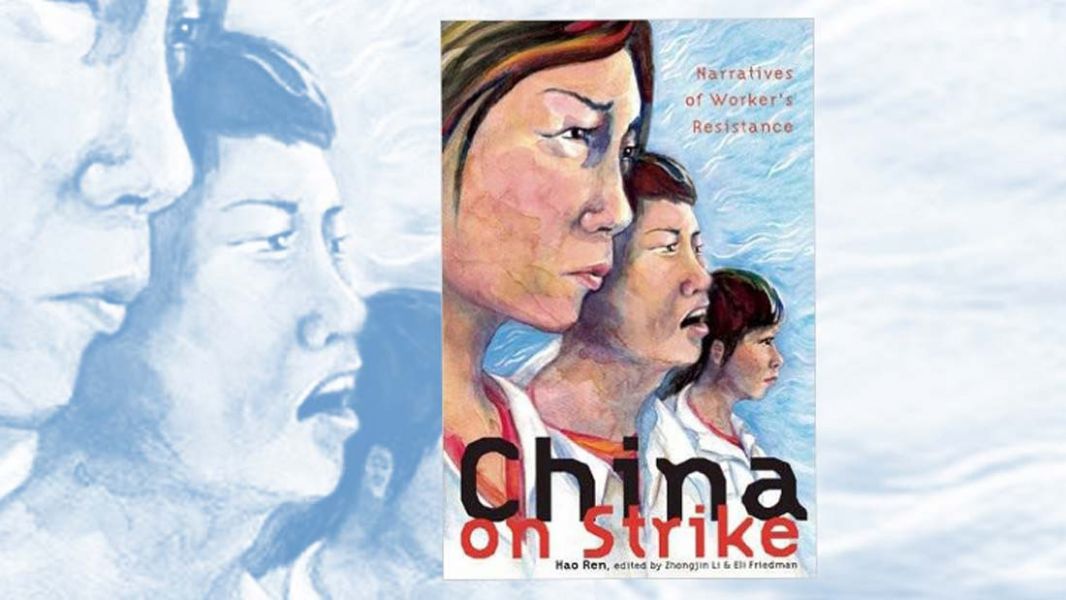
Eli Friedman on China on Strike
A unique contribution to the literature on the resistance of Chinese migrant workers, China on Strike is a collection of stories of collective actions undertaken by migrant workers in the Pearl River Delta since the turn of the century. Authored by Chinese labour activist Hao Ren as part of an activist network and edited in English by Zhongjin Li and Eli Friedman, the book draws its strength from the author’s in-depth interviews with workers, an extraordinary set of voices and perspectives that come alive on the page. Besides examining different kinds of strikes, the book focuses on the experience of worker leaders, offering a rare glimpse into the world of informal labour activism in China. For our Academic Watch, we spoke with the book’s co-editor Eli Friedman, an Assistant Professor of International and Comparative Labor at Cornell University’s ILR School.
This book has an interesting and unusual origin. How did you learn about the Chinese-language edition? And why did you decide to help translate and publish it in English?
Eli Friedman: I first found out about the activist collective behind China on Strike, as well as the worker magazine Gongchang Longmenzhen [from which the book project emerged], through friends in Guangzhou. These activists had already published several editions of the magazine before embarking on the book project. The book was translated in piecemeal fashion by dedicated activists from various different countries. The reason I’m so excited to have this book in English is because it provides quite simply the best, most detailed, accounts of strikes in China. Not only do we get to see all the nitty gritty involved in launching and sustaining strikes, but it also includes workers’ own reflections. People outside of China may have heard about the huge number of strikes, but the actual process, outcomes, and implications of these thousands of strikes remains something of a mystery for most people—even for labour scholars or activists. So bringing this book out in English is meant both to educate, and to inspire similar kinds of worker resistance elsewhere.
There has been a proliferation of studies on Chinese workers over the last decade, including your own Insurgency Trap. What does China on Strike tell us about strikes and their organisers that perhaps other academic studies do not?
EF: One of the outstanding features of this book is that it really personalises the strike participants. Rather than seeing them simply as strike participants, as might be the case in an academic study, we get a much more comprehensive view as to who these workers are, where they come from, how they feel about their work, and their reflections on participating in collective action. It shows very clearly how workers’ tactics and strategies evolve, how workers learn from each other, and how they teach others based on their experiences. Another thing—something that poses a real conundrum for thinking about how to politicise worker struggle—is the ephemerality of protest. In case after case, we see that workers leave as soon or shortly after the strike ends. There is a sense of constant churn, an inability or perhaps disinterest in establishing durable forms of organisation. This is something we knew from academic studies, but the book shows that this isn’t simply because of state repression. Workers themselves feel very little sense of attachment to the workplace, or to a worker identity. While this desire to escape the drudgery of factory work and the precarity of the life of a migrant is more than understandable, it does raise questions about the locus of working class politics.
The author of this book was a university graduate who decided to dedicate herself to labour activism. The phenomenon of student-turned-activists seems to have certain similarities with student radicals taking up factory jobs in the sixties and seventies in Europe and North America. Could you tell us more about it? What effect do you think this may have on the labour movement in China?
EF: This phenomenon of student activists, or students going to work in factories, is still very limited. To my knowledge, there are a handful of folks in the Pearl River Delta, and students in Beijing have also gotten involved in activism. While we shouldn’t make too big a deal of this, given its limited scope, the fact that any intellectuals are pursuing labour activism is noteworthy. Any connection between intellectuals and workers is highly politically sensitive, given the role that such alliances have played in revolutionary movements of the past. The fact that even a handful of students are willing to pursue ideals other than material self-enrichment is a promising development.
What has been the reception of the book in the United States? What are the challenges of explaining the Chinese labour movement to an American audience?
EF: The book’s reception in the United States has been quite positive. Some of the authors recently completed a book tour here. I think there’s a real hunger among labour activists in particular for thinking about a different mode of politics. China on Strike presents this alternative—militant action at the workplace to force concession from the boss. I do feel a little conflicted about this, however, since I have sometimes felt that people in the United States place unrealistic hopes on Chinese workers. When people hear about thousands of strikes every year, it is (understandably) very exciting, and raises hopes of a powerful new labour movement. So the real complexity for me is helping people to understand the political meaning of these strikes. I am of the opinion that incredibly high levels of worker unrest in China is really only a first step. As is so clear in many of these stories, workers’ gains from direct action are as tenuous as their own self-organisation. Indeed, one possible interpretation of this huge expansion in strikes is that it derives from workers’ weaknesses—this is the only way they can get anyone to take them seriously. So until they can establish the capacity to coerce state and capital in a consistent, politicised, and proactive way, workers will remain largely reactive to exploitation and domination. So I think the fundamental challenge in introducing labour politics to an American or any international audience, is to allow people to see clearly that this is an exciting moment in that it presents certain potentialities—but that we can’t count on Chinese worker militancy to single-handedly reinvigorate a more or less moribund global labour movement. The real takeaway, I hope, is that wherever in the world workers find themselves, self-organisation and militant resistance must form the foundation of expanded working class power.





